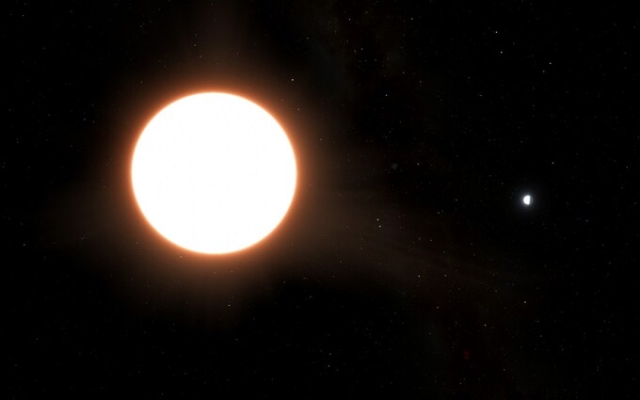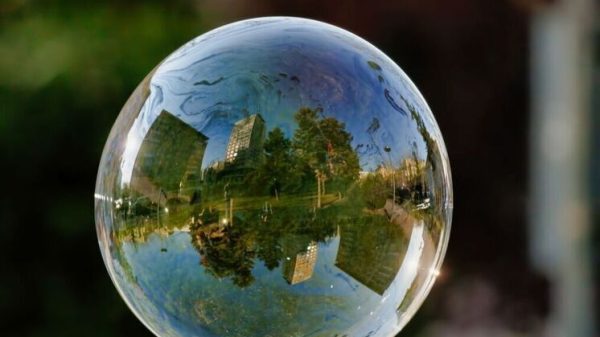 Artist's impression of exoplanet LTT9779b orbiting its star 264 light-years from Earth. Photo: Ricardo Ramirez Reyes/via Reuters
Artist's impression of exoplanet LTT9779b orbiting its star 264 light-years from Earth. Photo: Ricardo Ramirez Reyes/via Reuters
Astronomers have discovered a planet so reflective that it is a «giant mirror in space.»
Named LTT9779b, it orbits the sun's star every 19 hours and appears shrouded metal particles. clouds of titanium and silicates.
Located in our Milky Way galaxy, it is about 264 light-years from Earth in the direction of the constellation Sculptor and reflects about 80% of incoming light, making it the most reflective natural object in the universe .
“This is a giant cosmic mirror,” said Professor James Jenkins, astronomer and co-author of the study, published in the journal Astronomy & Astrophysics.
The planet is about 4.7 times the diameter of Earth and orbits its star at a much shorter distance than Mercury, our solar system's innermost planet, orbits our Sun. It is 60 times closer to its star than the Earth is to the Sun.
Venus, the brightest object in Earth's night sky, besides the Moon, is the most reflective natural object in our solar system, shrouded in poisonous clouds of sulfuric acid. acid. Venus reflects about 75 percent of the incident light. Earth reflects about 30 percent.
Due to the scorching solar radiation from its star, the surface temperature of LTT9779b is about 1800 °C, which is hotter than molten lava.
Atmosphere with water-based clouds, like on Earth, would have been blown away by solar radiation long ago.
Researchers believe that its clouds are composed of a metal, which is a combination of titanium and silicate –, which make up most of the rocks in the earth's crust .
“We even think that clouds can condense into droplets and titanium rain falls in some parts of the atmosphere,” said Prof Jenkins of Diego Portales. University and Center of Excellence in Astrophysics and Related Technologies (CATA) in Chile.
«A planet that shouldn't exist»
Researchers studied the planet using the European Space Agency's CHEOPS orbiting telescope.
“To date, no other planet like this has been discovered,” said Dr. Sergio Hoyer, an astronomer at the Marseille Astrophysical Laboratory in France. who is the lead author of the study.
According to Professor Vivienne Parmentier, an astronomer from the Côte d'Azur, having an atmosphere in orbit so close to its star makes it «a planet that should not exist.» observatory in France and co-author of the study.
«The super-reflective cloud cover probably helped prevent the planet from heating up too much and stripping it of its atmosphere,» Professor Parmentier said.
«It's quite unique, as all other planets with this temperature, which are large enough to retain their atmosphere, are too hot to form clouds and are therefore as dark as charcoal.»
p>
LTT9779b also appears to be tidally locked to its star in the same way that the Moon is to Earth, with a permanent day side facing the star and a permanent night side facing away.
More than 5,000 planets outside our solar system — so-called exoplanets have been discovered, many of which have traits very different from the eight planets in our solar system.
As instruments become more capable — the James Webb Space Telescope became operational last year, and the Extremely Large Telescope is under construction in Chile — more discoveries lie ahead.
«Exoplanet Diversity stunning,” said Professor Parmentier. «And we've only just touched the surface.»























































Свежие комментарии